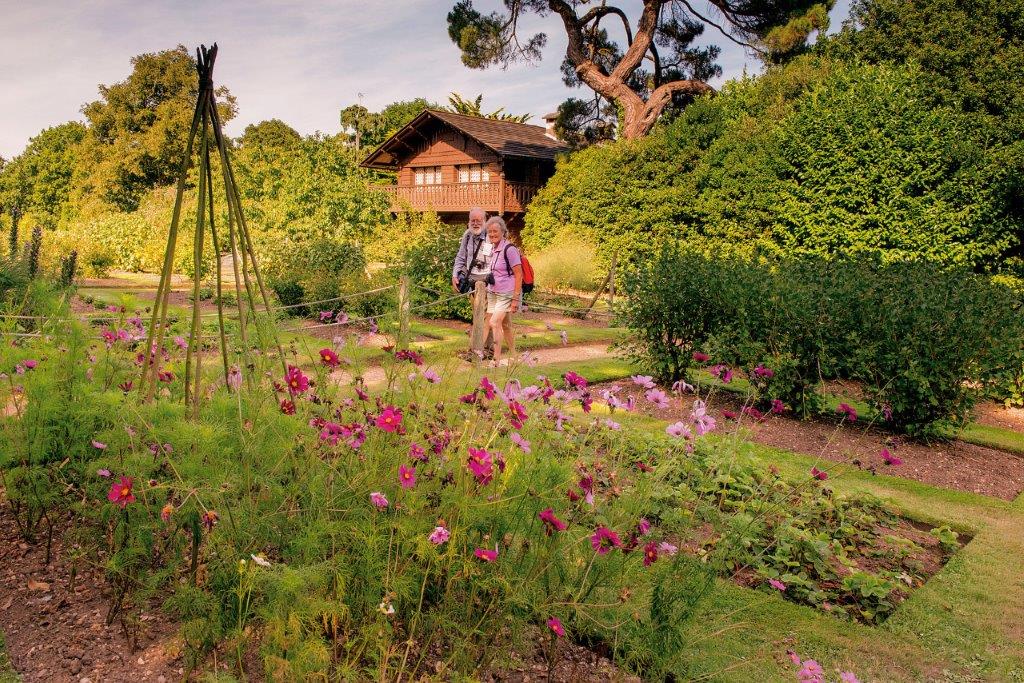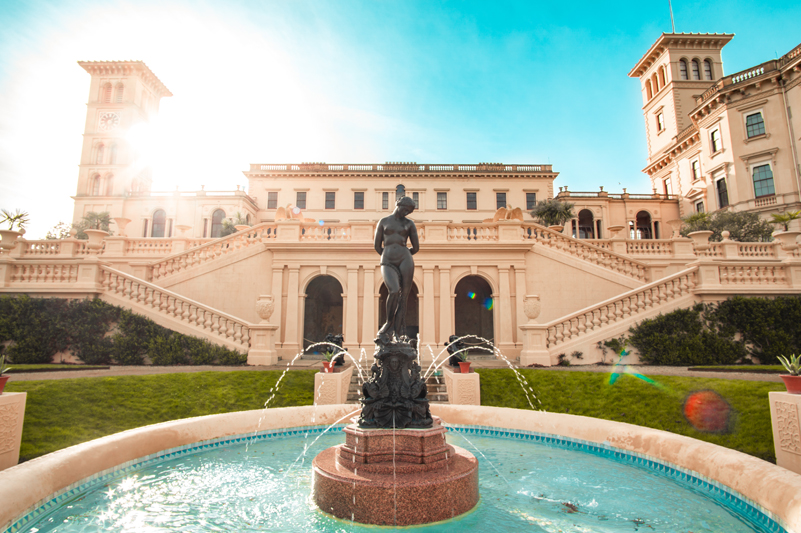
Hidden Histories on the Isle of Wight
Ahead of Heritage Open Days at the beginning of September, we’ve decided to take a peek behind the scenes and over the garden walls of some of the Island’s historic houses and attractions, revealing their hidden stories and bringing their forgotten pasts back to life.

Osborne
Set amongst the wide fields and leafy woodlands above East Cowes is Osborne – an impressive Italianate villa, best known as Queen Victoria’s former seaside home. With elegant terraces, an underground ice house and a walled garden growing everything from rhubarb to bergamot (that’s the citrus fruit used in Earl Grey tea), it’s a must-see for many Isle of Wight visitors. However, while its royal connections and Indian influences are well-known, Osborne has a wealth of other stories to uncover too.
Tucked away in the Swiss Cottage Museum are two elaborately embroidered Turkish-style jackets, once owned by two young brothers named Johans and Georgio. Rescued from the Bulgarian-Romanian border during the Crimean War, the badly injured pair were picked up by sailors from HMS Firebrand who brought them back to Britain. Once Queen Victoria heard their story, she took them under her wing, lodging them with Mrs Jackman – a tenant of the Osborne Estate living at Barton Cottages. Here they would grow up under the new names of John and George Hyde, with frequent visits from the Queen who would even drop by to sketch them.

Carisbrooke Castle
Occupying a prominent hilltop position, close to the centre of the Island is Carisbrooke Castle, whose crumbly stone walls have long been a feature of the local landscape, resisting centuries of weather and even a short-lived French siege. While you might like to clamber up to the Norman keep or watch the resident grey donkeys turn the historic well-house wheel – there’s one particular character from Carisbrooke’s past who deserves another look.
Jane Whorwood was a female secret agent and Royalist spy during the First Civil War. When King Charles I fled Hampton Court for the Isle of Wight in 1647, he soon found himself imprisoned behind the castle walls of Carisbrooke. Jane had already arrived in the nearby market town of Newport and as his ‘escape manager’ tried to coordinate his getaway. Coded letters were smuggled in and out, and she even arranged for a ship to whisk the king away to Holland once he’d broken free, however, unfortunately for Charles, none of his escape attempts ever proved successful.
Mottistone Manor
On the southwestern side of the Island, in the shadow of Mottistone Down (and its mystical Neolithic standing stone), the winding road will lead you to the gates of Mottistone Manor. Mentioned in the Domesday Book, this ancient home (now owned by the National Trust) features a Tudor wing, an Elizabethan extension and some Sicilian-inspired terraces and gardens laid out in the 1960s by Lady Vivien Nicholson.
After strolling through the orchards and visiting the tea garden for a reviving drink, you might like to crack out your compass and head for The Warrior Trail – a hiking route that gives a nod to a recently rediscovered local story. During the First World War, Mottistone owner General Jack Seely was sent to the Western Front, accompanied by his loyal, locally born and bred horse Warrior. Despite finding themselves in some of the fiercest battles of the conflict, Warrior survived and returned to the Island in 1918 as a local hero, living out the rest of his days in the fields around Mottistone.
Farringford
Not far from the lapping waves of Freshwater Bay is Farringford, a tranquil Gothic home once owned by the famous Victorian poet Alfred, Lord Tennyson. Here he would write poems (including Maud and Enoch Arden), take walks across the chalky downland wearing his black cape and broad-brimmed hat and occasionally escape from visitors through the turret staircase or across his specially made bridge which led out from his garden.
One guest he didn’t try to avoid though was Queen Emma of Hawaii who visited the UK in 1865 to raise money to build a cathedral in Honolulu. An avid reader she was especially keen to meet Tennyson and was invited to spend a few days amongst the calming atmosphere of Farringford. During her time in Freshwater though, so many guests dropped by to catch a glimpse of the visiting Hawaiian queen that in the end Tennyson had to hide her in the summerhouse in the kitchen garden so she could read her letters in peace.
Museum of Island History
Amongst the busy streets of Newport, set in one of the oldest parts of town, is The Guildhall – an often overlooked building, characterised by its tall Greek columns and collonaded walkway below. Constructed in 1816, it was based on plans drawn up by high-flying architect John Nash – who also designed Brighton Pavilion, Marble Arch and Regent’s Park in London. Initially intended as a marketplace with a town hall above, over the years this impressive stony-coloured building has undergone many tweaks and alterations and has previously housed Newport’s ambulance station, fire station and courtroom too.
Today, the ground floor is home to the Museum of Island History which last year opened its doors for free during Heritage Open Days. Alongside its permanent collections, it also hosted a special exhibition on the famous Isle of Wight Rodeo Riders – a group of local men who travelled the country performing incredible stunts on horseback between 1924 and 1939. Keep an eye out as they announce what’s planned for this year’s event.
